NTC Content Area On ICT For JHS Past Question And Answers 1
NTC Content Area (ICT For JHS) 1
1. Which of the following devices is primarily used as an output device?
A. Microphone
B. Monitor
C. Keyboard
D. Joystick
Answer: B. Monitor
2. Which device is used to read barcodes?
A. Printer
B. Barcode Reader
C. Webcam
D. Touch Screen
Answer: B. Barcode Reader
NTC Multiple Subject Content For Early Childhood Education Past Questions 4
NTC Multiple Subject Content For Early Childhood Education Past Questions 3
NTC Multiple Subject Content For Early Childhood Education Past Questions 2
NTC Multiple Subject Content For Early Childhood Education Past Questions 1
NTC Professional General Knowledge Past Questions and Answers (Literacy) 2024
NTC Professional General Knowledge Past Questions and Answers (Comprehension 1) 2024
NTC Professional General Knowledge Past Questions and Answers (Literacy) 2024
NTC Professional General Knowledge Past Questions and Answers (Comprehension) 2024
3. What type of device is a touchscreen considered?
A. Output only
B. Input only
C. Both input and output
D. Neither input nor output
Answer: C. Both input and output
4. Which of the following is typically used to enter text into a computer?
A. Scanner
B. Printer
C. Keyboard
D. Speaker
Answer: C. Keyboard
5. Which device is likely to be used by an architect to input detailed drawings into a PC?
A. Mouse
B. Digital Camera
C. Graphics Tablet
D. Joystick
Answer: C. Graphics Tablet
6. Which of the following devices is commonly used to input handwriting or drawings into a computer system?
A. Keyboard
B. Mouse
C. Graphics tablet
D. Scanner
Answer: C. Graphics tablet
7. Which input device is primarily used for capturing images or documents and converting them into digital format?
A. Keyboard
B. Mouse
C. Scanner
D. Printer
Answer: C. Scanner
NTC Multiple Subject Content For Early Childhood Education Past Questions 4
NTC Multiple Subject Content For Early Childhood Education Past Questions 3
NTC Multiple Subject Content For Early Childhood Education Past Questions 2
NTC Multiple Subject Content For Early Childhood Education Past Questions 1
NTC Professional General Knowledge Past Questions and Answers (Literacy) 2024
NTC Professional General Knowledge Past Questions and Answers (Comprehension 1) 2024
NTC Professional General Knowledge Past Questions and Answers (Literacy) 2024
NTC Professional General Knowledge Past Questions and Answers (Comprehension) 2024
8. What input device is specifically designed for capturing audio input and transmitting it to a computer system?
A. Microphone
B. Keyboard
C. Mouse
D. Joystick
Answer: A. Microphone
9. Which input device is used to detect motion and translate it into cursor movement on a computer screen?
A. Keyboard
B. Mouse
C. Scanner
D. Touchpad
Answer: B. Mouse
10. What device is used for entering numeric data or commands into a computer system?
A. Keyboard
B. Mouse
C. Scanner
D. Numeric keypad
Answer: D. Numeric keypad
11.Which of these devices is NOT an example of an input device?
A. Keyboard
B. Mouse
C. Plotter
D. Scanner
The answer is C.A plotter is an output device that creates hard copy output.
12.Which of these devices is NOT an example of an output device?
A. Printer
B. Monitor
C. Keyboard
D. Scanner
The answer is C.A keyboard is an input device that allows users to enter data into a computer.
NTC Multiple Subject Content For Early Childhood Education Past Questions 4
NTC Multiple Subject Content For Early Childhood Education Past Questions 3
NTC Multiple Subject Content For Early Childhood Education Past Questions 2
NTC Multiple Subject Content For Early Childhood Education Past Questions 1
NTC Professional General Knowledge Past Questions and Answers (Literacy) 2024
NTC Professional General Knowledge Past Questions and Answers (Comprehension 1) 2024
NTC Professional General Knowledge Past Questions and Answers (Literacy) 2024
NTC Professional General Knowledge Past Questions and Answers (Comprehension) 2024
13.Which of these devices is NOT an example of a storage device?
A. Hard drive
B. CD-ROM
C. Flash drive
D. Printer
The answer is D.A printer is an output device that creates hard copy output.
14.Which of these devices is NOT an example of a network device?
A. Modem
B. Router
C. Switch
D. Keyboard
The answer is D.A keyboard is an input device that allows users to enter data into a computer.
15.Which of these devices is NOT an example of a peripheral device?
A. Printer
B. Monitor
C. Keyboard
D. CPU
The answer is D. The CPU is an integral part of the computer and is not considered a peripheral device.
16. What does the conceptual schema of a database describe?
A. The way data is stored on disk
B. The logical structure of the entire database
C. The different user views of the database
D. The hardware part of the database system
Answer: B. The logical structure of the entire database
17. Which schema describes the physical storage of data in a database?
A. External schema
B. Conceptual schema
C. Physical schema
D. Logical schema
Answer: C. Physical schema
18. In database architecture, what is the role of the internal schema?
A. To present various users with their own views of the database
B. To define the logical structure of the database
C. To manage the data storage and access paths
D. To define relationships between tables
Answer: C. To manage the data storage and access paths
NTC Multiple Subject Content For Early Childhood Education Past Questions 4
NTC Multiple Subject Content For Early Childhood Education Past Questions 3
NTC Multiple Subject Content For Early Childhood Education Past Questions 2
NTC Multiple Subject Content For Early Childhood Education Past Questions 1
NTC Professional General Knowledge Past Questions and Answers (Literacy) 2024
NTC Professional General Knowledge Past Questions and Answers (Comprehension 1) 2024
NTC Professional General Knowledge Past Questions and Answers (Literacy) 2024
NTC Professional General Knowledge Past Questions and Answers (Comprehension) 2024
19. The process of defining a database so that it faithfully represents all aspects of the organization is called:
A. Normalization
B. Data Mapping
C. Data Definition
D. Data Modeling
Answer: D. Data Modeling
20. Which of the following best describes a sub-schema?
A. A blueprint of the physical storage of data
B. A specialized view of certain aspects of the database for a user
C. The overall logical view of the entire database
D. A schema that describes how data is distributed across a network
Answer: B. A specialized view of certain aspects of the database for a user
21. In the context of computer crime, what does the term “payload” typically refer to?
A. The money a criminal receives from extortion or other computer crimes.
B. The amount of data loss to a company or individual who is a victim of a computer crime.
C. The destructive event or prank the program is intended to deliver.
D. The financial burden a computer crime places on its victims.
Answer: C. The destructive event or prank the program is intended to deliver.
22. When a hacker talks about the payload of a virus, what are they usually referring to?
A. The ransom demanded after infecting a system.
B. The extent of damage inflicted on the victim’s data.
C. The specific action the virus will perform, such as deleting files or stealing information.
D. The financial losses incurred by the victim due to the attack.
Answer: C. The specific action the virus will perform, such as deleting files or stealing information.
23. What distinguishes the payload of a malware attack from other components of the attack?
A. It is the method used to deliver the malware to the victim’s system.
B. It is the encryption method used to obfuscate the malware code.
C. It is the malicious action or effect triggered by the malware.
D. It is the network protocol used for communication between the malware and its operator.
Answer: C. It is the malicious action or effect triggered by the malware.
24. When discussing cybersecurity, what role does understanding the payload of a potential threat play?
A. It helps in determining the origin of the attack.
B. It aids in identifying potential vulnerabilities in the target system.
C. It assists in assessing the potential impact of the attack on the target system.
D. It facilitates the decryption of encrypted data during an attack.
Answer: C. It assists in assessing the potential impact of the attack on the target system.
NTC Multiple Subject Content For Early Childhood Education Past Questions 4
NTC Multiple Subject Content For Early Childhood Education Past Questions 3
NTC Multiple Subject Content For Early Childhood Education Past Questions 2
NTC Multiple Subject Content For Early Childhood Education Past Questions 1
NTC Professional General Knowledge Past Questions and Answers (Literacy) 2024
NTC Professional General Knowledge Past Questions and Answers (Comprehension 1) 2024
NTC Professional General Knowledge Past Questions and Answers (Literacy) 2024
NTC Professional General Knowledge Past Questions and Answers (Comprehension) 2024
25. Which term is commonly associated with the payload of a Distributed Denial of Service (DDoS) attack?
A. The volume of traffic generated by the attack.
B. The method used to hijack legitimate user credentials.
C. The duration of the attack.
D. The monetary demand made by the attackers.
Answer: A. The volume of traffic generated by the attack.
26. What is the purpose of a Trojan horse in the context of computer security?
A. To replicate itself and spread to other computers
B. To detect and remove viruses from the computer
C. To disguise itself as a legitimate program to deliver a malicious payload
D. To encrypt files and demand a ransom for their release
Answer: C. To disguise itself as a legitimate program to deliver a malicious payload
27. Phishing is a technique used by criminals to:
A. Create a physical barrier to unauthorized access to a computer system
B. Infect computers with malware that damages system functionality
C. Trick people into providing sensitive information by masquerading as a trustworthy entity
D. Steal software by physically removing it from an unsecured location
Answer: C. Trick people into providing sensitive information by masquerading as a trustworthy entity
28. What does the term “ransomware” refer to?
A. Software that demands a ransom to prevent the publication of personal data
B. A network that protects personal data from unauthorized access
C. A method of securely encrypting data to protect it from theft
D. Malware that encrypts files on the victim’s device and demands payment for their decryption
Answer: D. Malware that encrypts files on the victim’s device and demands payment for their decryption
29. What is a zero-day exploit?
A. A virus that can be eradicated within 24 hours
B. A vulnerability that is exploited before the software creator is aware of it
C. A cybersecurity threat that occurs every day
D. A malware attack that deletes itself after payload delivery
Answer: B. A vulnerability that is exploited before the software creator is aware of it
NTC Multiple Subject Content For Early Childhood Education Past Questions 4
NTC Multiple Subject Content For Early Childhood Education Past Questions 3
NTC Multiple Subject Content For Early Childhood Education Past Questions 2
NTC Multiple Subject Content For Early Childhood Education Past Questions 1
NTC Professional General Knowledge Past Questions and Answers (Literacy) 2024
NTC Professional General Knowledge Past Questions and Answers (Comprehension 1) 2024
NTC Professional General Knowledge Past Questions and Answers (Literacy) 2024
NTC Professional General Knowledge Past Questions and Answers (Comprehension) 2024
30. Which term describes software that is specifically designed to detect, stop, and remove viruses and other kinds of malware?
A. Firewall
B. Antivirus
C. Adware
D. Freeware
Answer: B. Antivirus
31. Which component stores data in a non-volatile manner, retaining the data even when the computer is turned off?
A. RAM (Random Access Memory)
B. CPU (Central Processing Unit)
C. HDD (Hard Disk Drive)
D. GPU (Graphics Processing Unit)
The answer is C. HDDs store data in a non-volatile manner, which means that the data is retained even when the computer is turned off. RAMs, on the other hand, store data in a volatile manner, which means that the data is lost when the computer is turned off.
32. What is the difference between RAM and ROM?
A. RAM is volatile, while ROM is non-volatile.
B. RAM is non-volatile, while ROM is volatile.
C. RAM is expensive, while ROM is cheap.
D. RAM is cheap, while ROM is expensive.
The answer is A. RAM is volatile, which means that the data is lost when the computer is turned off. ROM is non-volatile, which means that the data is retained even when the computer is turned off.
33. What is the difference between a hard disk drive and a solid-state drive?
A. A hard disk drive uses a spinning disk to store data, while a solid-state drive uses flash memory.
B. A hard disk drive uses flash memory to store data, while a solid-state drive uses a spinning disk.
C. A hard disk drive is more expensive than a solid-state drive.
D. A hard disk drive is less expensive than a solid-state drive.
The answer is A. A hard disk drive uses a spinning disk to store data, while a solid-state drive uses flash memory.
NTC Multiple Subject Content For Early Childhood Education Past Questions 4
NTC Multiple Subject Content For Early Childhood Education Past Questions 3
NTC Multiple Subject Content For Early Childhood Education Past Questions 2
NTC Multiple Subject Content For Early Childhood Education Past Questions 1
NTC Professional General Knowledge Past Questions and Answers (Literacy) 2024
NTC Professional General Knowledge Past Questions and Answers (Comprehension 1) 2024
NTC Professional General Knowledge Past Questions and Answers (Literacy) 2024
NTC Professional General Knowledge Past Questions and Answers (Comprehension) 2024
34. What is the difference between a CPU and an APU?
A. A CPU is more powerful than an APU.
B. An APU is more powerful than a CPU.
C. A CPU is more expensive than an APU.
D. An APU is more expensive than a CPU.
The answer is B. An APU is more powerful than a CPU because it combines the CPU and GPU into one chip.
35. What is the difference between a laptop and desktop computer?
A. A laptop is more portable than a desktop computer.
B. A desktop computer is more portable than a laptop computer.
C. A laptop is more powerful than a desktop computer.
D. A desktop computer is more powerful than a laptop computer.
The answer is A. A laptop is more portable than a desktop computer because it can be easily carried around.
36. Which operating system is known for using the Command Prompt as its default command-line interface?
A. Windows
B. MacOS
C. Linux
D. iOS
Answer: A. Windows
37. The Terminal in MacOS is based on which type of shell by default?
A. Bash
B. PowerShell
C. Zsh (Z shell)
D. Command Prompt
Answer: C. Zsh (Z shell)
NTC Multiple Subject Content For Early Childhood Education Past Questions 4
NTC Multiple Subject Content For Early Childhood Education Past Questions 3
NTC Multiple Subject Content For Early Childhood Education Past Questions 2
NTC Multiple Subject Content For Early Childhood Education Past Questions 1
NTC Professional General Knowledge Past Questions and Answers (Literacy) 2024
NTC Professional General Knowledge Past Questions and Answers (Comprehension 1) 2024
NTC Professional General Knowledge Past Questions and Answers (Literacy) 2024
NTC Professional General Knowledge Past Questions and Answers (Comprehension) 2024
38. What is the primary purpose of an operating system (OS)?
A. To manage the computer’s hardware and software resources
B. To provide security against cyber threats
C. To enhance the graphical user interface (GUI) only
D. To increase the processing speed of the CPU
Answer: A. To manage the computer’s hardware and software resources
39. Which of the following is NOT a function of an operating system?
A. Managing memory and processes
B. Facilitating networking
C. Designing graphical elements
D. Managing files and directories
Answer: C. Designing graphical elements
40. PowerShell is a task automation and configuration management framework, which is part of which operating system family?
A. Linux
B. Windows
C. MacOS
D. Android
Answer: B. Windows
41. Which shell is commonly associated with the command-line interface in Unix-like operating systems?
A. Bash
B. PowerShell
C. Command Prompt
D. Zsh
Answer: A. Bash
42. In Linux systems, what file is typically used to configure the behavior of the Bash shell for each user?
A. .bashprofile
B. .bashconfig
C. .bashrc
D. .bashsettings
Answer: C. .bashrc
43. Which command is used to list the contents of a directory in the Bash shell?
A. dir
B. ls
C. list
D. show
Answer: B. ls
NTC Multiple Subject Content For Early Childhood Education Past Questions 4
NTC Multiple Subject Content For Early Childhood Education Past Questions 3
NTC Multiple Subject Content For Early Childhood Education Past Questions 2
NTC Multiple Subject Content For Early Childhood Education Past Questions 1
NTC Professional General Knowledge Past Questions and Answers (Literacy) 2024
NTC Professional General Knowledge Past Questions and Answers (Comprehension 1) 2024
NTC Professional General Knowledge Past Questions and Answers (Literacy) 2024
NTC Professional General Knowledge Past Questions and Answers (Comprehension) 2024
44. What command is used to navigate to the parent directory in the Bash shell?
A. up
B. back
C. cd ..
D. cd /
Answer: C. cd ..
45. Which keyboard shortcut is commonly used to clear the terminal screen in the Bash shell?
A. Ctrl + L
B. Ctrl + C
C. Ctrl + D
D. Ctrl + Shift + C
Answer: A. Ctrl + L
NTC GTLE Past Question on General Knowledge In Art licensure, NTC GTLE Licensure Past Question on Accounting, NTC GTLE Licensure Past Question on Textiles, NTC GTLE Licensure Past Question on Picture Making, NTC GTLE Licensure Past Question on Integrated Science For SHS, NTC GTLE Licensure Past Question on Integrated Science For JHS, NTC GTLE Licensure Past Question on French, NTC GTLE Licensure Past Question on Business Management, NTC Licensure GTLE Past Question on Career Technology, NTC Licensure GTLE Past Question on Clothing And Textiles, NTC Licensure GTLE Past Question on Economics, NTC Licensure GTLE Past Question on Christian Religious Studies, NTC Licensure GTLE Past Question on Electronics, NTC Licensure GTLE Past Question on English Language For SHS, NTC Licensure GTLE Past Question on Applied Electricity, NTC Licensure GTLE Past Question on Wood Work, NTC Licensure GTLE Past Question on Technical Drawing, NTC Licensure GTLE Past Question on Social Studies For JHS, NTC Licensure GTLE Past Question on Sculpture, NTC Licensure GTLE Past Question on Maths For SHS, NTC Licensure GTLE Past Question on Maths For JHS, NTC Licensure GTLE Past Question on Multiple Subjects Content For Early Grade/Childhood, NTC Licensure GTLE Past Question on ICT For JHS, NTC Licensure GTLE Past Question on Government, NTC Licensure GTLE Past Question on Geography, NTC Licensure GTLE Past Question on Early Childhood Pedagogy, NTC GTLE Past Question on Chemistry, NTC Licensure GTLE Past Question on Building Construction, NTC Licensure GTLE Past Question on Biology, NTC Licensure GTLE Past Question on Ceramics, NTC Licensure GTLE Past Question on Social Studies For SHS, NTC Licensure GTLE Past Question on RME, NTC Licensure GTLE Past Question on General Professional Knowledge, NTC Licensure GTLE Past Question on Physics, NTC Licensure GTLE Past Question on Pedagogy For Primary And JHS, NTC Licensure GTLE Past Question on Management In Living, NTC Licensure GTLE Past Question on Metal Work, NTC Licensure GTLE Past Question on Leatherwork, NTC Licensure GTLE Past Question on Multiple Subjects Content For Primary, NTC Licensure GTLE Past Question on History, NTC Licensure GTLE Past Question on Graphic Design, NTC Licensure GTLE Past Question on Basketry, NTC Licensure GTLE Past Question on Auto Mechanics, NTC Licensure GTLE Past Question on Agriculture Science, NTC Licensure GTLE Past Question on Music, NTC Licensure GTLE Past Question on ICT For SHS, NTC Licensure GTLE Past Question on Ghanaian Languages, NTC Licensure GTLE Past Question on Islamic Studies, NTC Licensure GTLE Past Question on Food And Nutrition, NTC Licensure GTLE Past Question on Creative Art And Design, NTC Licensure GTLE Past Question on English Language For JHS, NTC Licensure GTLE Past Question on Physical Education
Content Areas and Table of Specification Accounting, Content Areas and Table of Specification Textiles, Content Areas and Table of Specification Picture Making, Content Areas and Table of Specification Integrated Science For SHS, Content Areas and Table of Specification Integrated Science For JHS, Content Areas and Table of Specification French, Content Areas and Table of Specification Business Management, Content Areas and Table of Specification Career Technology, Content Areas and Table of Specification Clothing And Textiles, Content Areas and Table of Specification Economics, Content Areas and Table of Specification Christian Religious Studies, Content Areas and Table of Specification Electronics, Content Areas and Table of Specification English Language For SHS, Content Areas and Table of Specification Applied Electricity, Content Areas and Table of Specification Wood Work, Content Areas and Table of Specification Technical Drawing, Content Areas and Table of Specification Social Studies For JHS, Content Areas and Table of Specification Sculpture Content Areas and Table of Specification Maths For SHS, Content Areas and Table of Specification Maths For JHS, Content Areas and Table of Specification Multiple Subjects Content For Early Grade/Childhood, Content Areas and Table of Specification ICT For JHS, Content Areas and Table of Specification Government, Content Areas and Table of Specification Geography, Content Areas and Table of Specification Early Childhood Pedagogy, Content Areas and Table of Specification Chemistry, Content Areas and Table of Specification Building Construction, Content Areas and Table of Specification Biology, Content Areas and Table of Specification Ceramics, Content Areas and Table of Specification Social Studies For SHS, Content Areas and Table of Specification RME, Content Areas and Table of Specification General Professional Knowledge, Content Areas and Table of Specification Physics, Content Areas and Table of Specification Pedagogy For Primary And JHS, Content Areas and Table of Specification Management In Living, Content Areas and Table of Specification Metal Work, Content Areas and Table of Specification Leatherwork, Content Areas and Table of Specification Multiple Subjects Content For Primary, Content Areas and Table of Specification History, Content Areas and Table of Specification Graphic Design, Content Areas and Table of Specification Basketry, Content Areas and Table of Specification Auto Mechanics, Content Areas and Table of Specification Agriculture Science, Content Areas and Table of Specification Music, Content Areas and Table of Specification ICT For SHS, Content Areas and Table of Specification Ghanaian Languages, Content Areas and Table of Specification Islamic Studies, Content Areas and Table of Specification Food And Nutrition, Content Areas and Table of Specification Creative Art And Design, Content Areas and Table of Specification English Language For JHS, Content Areas and Table of Specification Physical Education

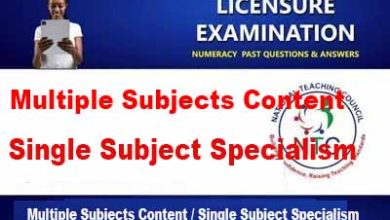
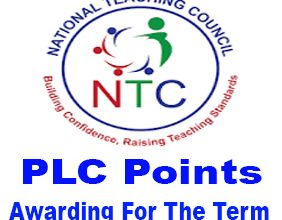

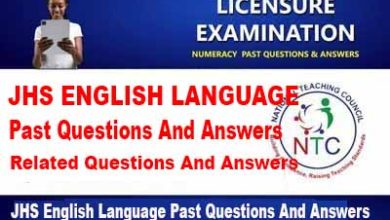
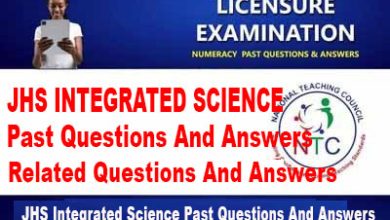
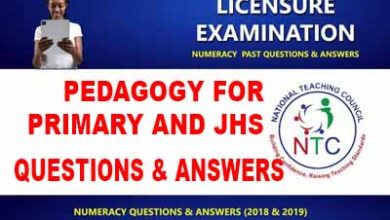
One Comment